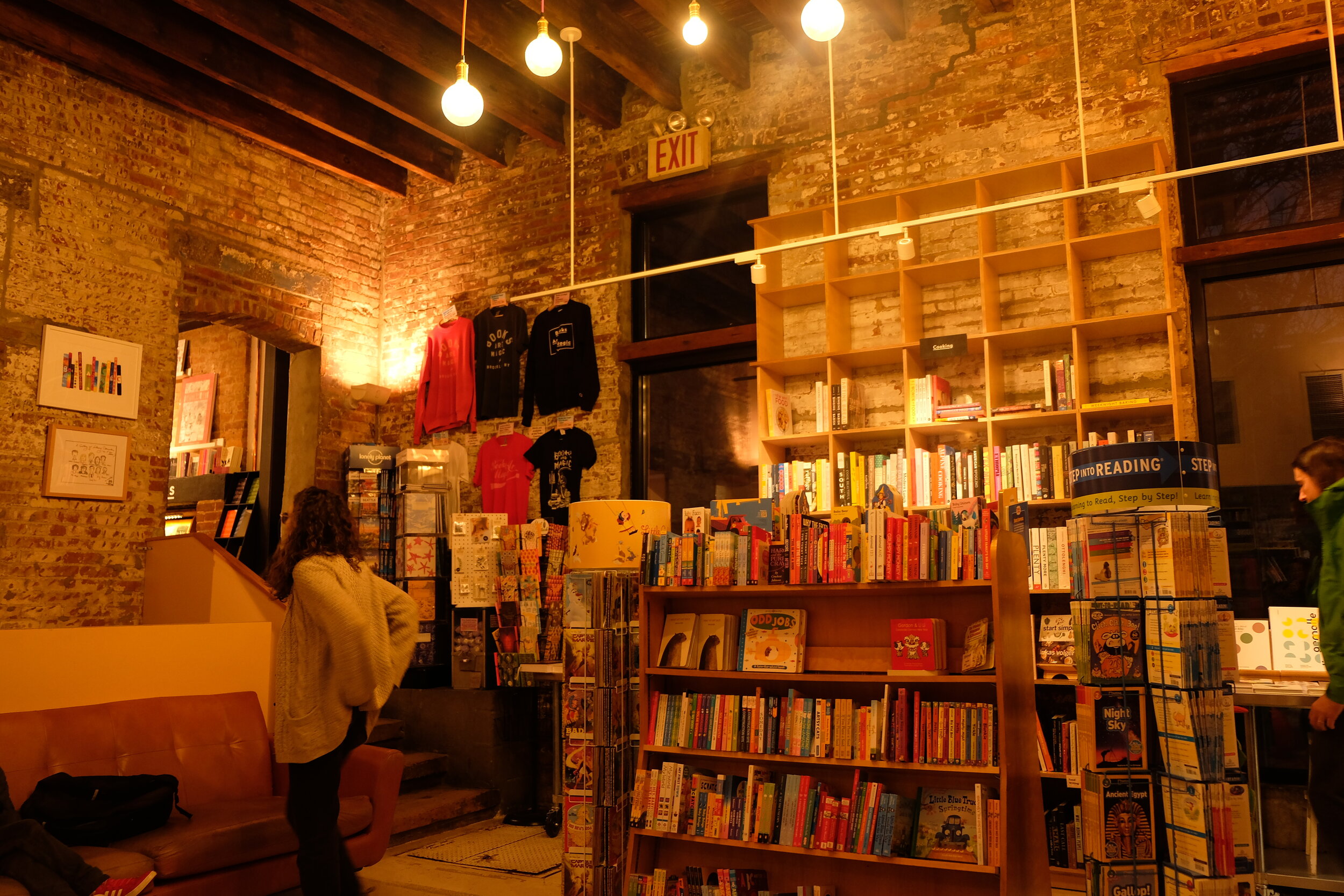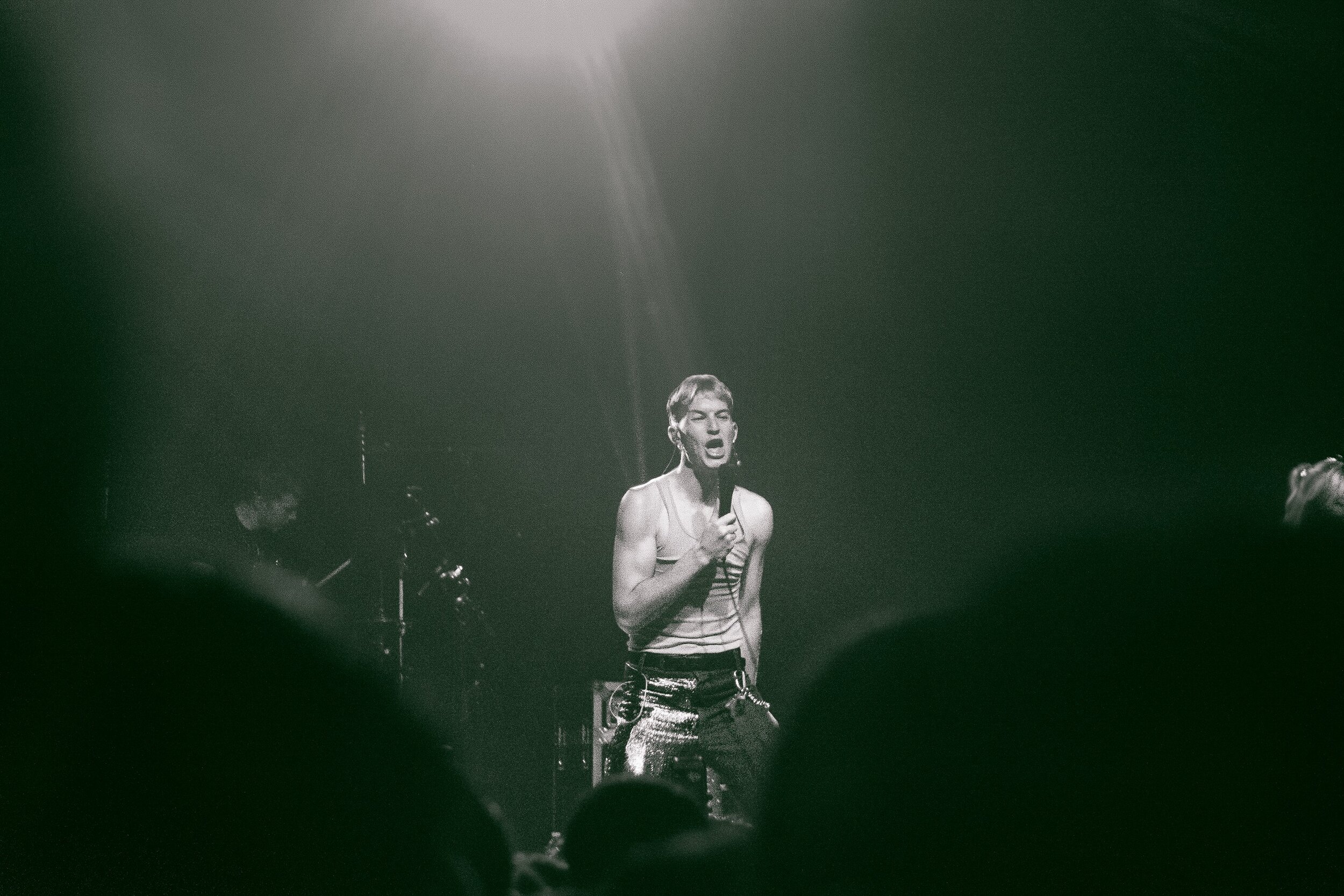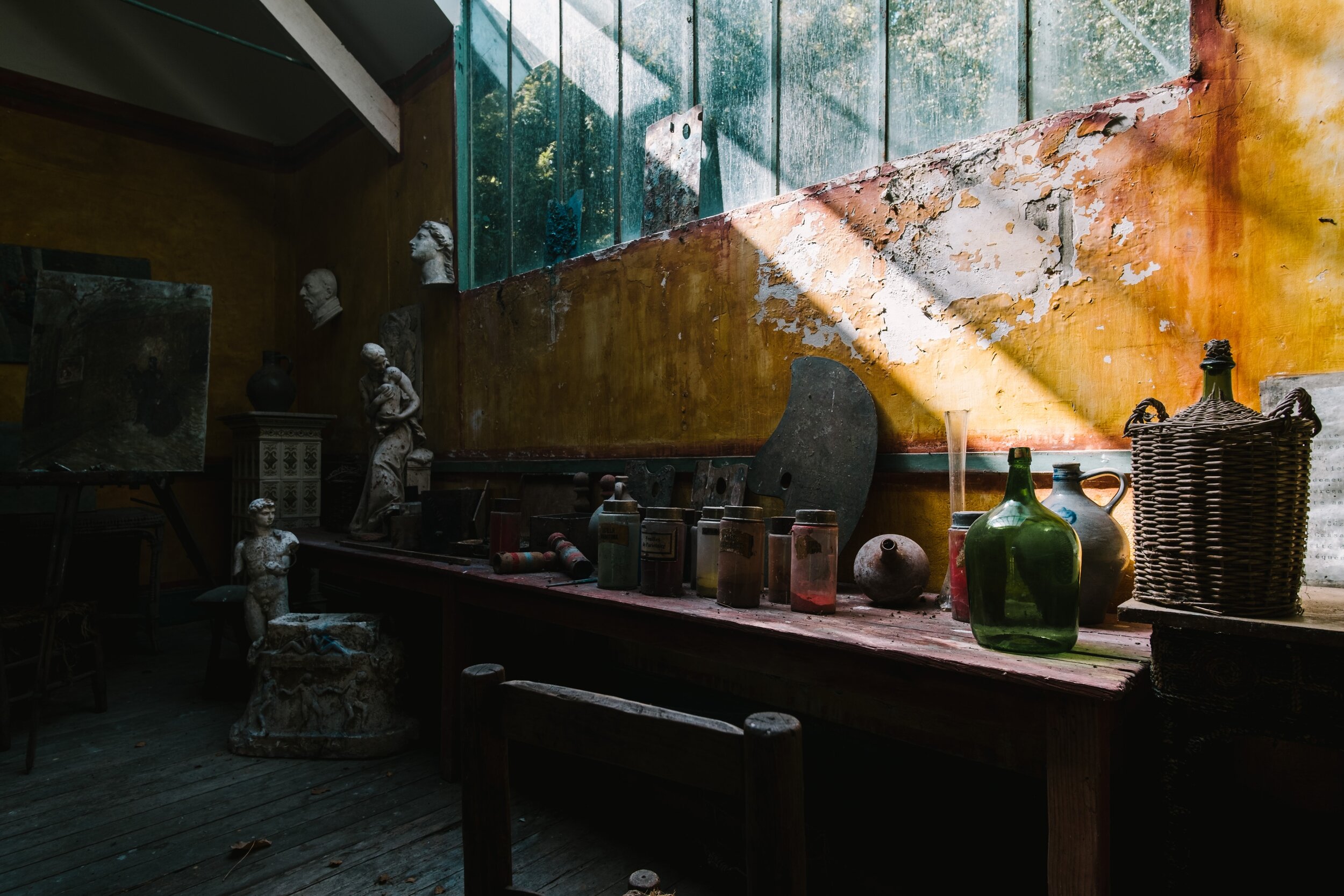Excerpts from DREAMing Out Loud, PEN America's tuition-free workshop for young undocumented and immigrant writers in New York City
DREAMing Out Loud is PEN America’s tuition-free writing workshop series for young undocumented and immigrant writers in New York City. To celebrate the latest volume in their ground-breaking anthology series, DREAMing Out Loud: Voices of Migrant Writers, Encounters is partnering with PEN America to share contributions that come from Baruch College alumni in this year’s edition. Find out more about the program. https://pen.org/dreaming-out-loud/
Encounters is grateful to share the following two excerpts, from Baruch alumni Erika Apupalo and Annmarie Gajdos.
Erika Apupalo, "A Car Ride"
Dating as an undocumented human has made you feel like an animal. An animal that lives in a human body. This animal revives with love, except even love is insecure. Love feels tied to living in an uncertain country whose laws dictate your existence. You can control everything around you, yet still, things can be taken from you in an instant. No warning signs. Except you still want to try to find love because you are young and dream of a better future. But you return to the present.
In the present, your human body returns home. On this Saturday, your parents take you to the fruit market in Jackson Heights. The fruit is fresher, and there is some nostalgia about the return to the place your family lived for about ten years.
On this morning car ride, you inhale softly. You tried. You wonder how absence plays into the emptiness that you feel in the pit of your stomach. There is something about losing someone that way. When his decision isn’t a part of yours, when can he remove his limbs from yours? Meanwhile, you cannot. You don’t want to. You sit listening to the songs on the radio as your parents drive to the fruit market.
The car swivels down the road. All the while, you are listening to neither the songs nor their conversation. All that is in your head is his name. His face, his body, his self. Because today, he is about to text you, unlike the other days when you have texted him. You crave him, like something out of this world. It is in this craving that you decompose a little each day. You lose yourself to him. All the while, there are others who tell you that he is wrong for you. Yet you still want him. You want all of him. You feel like an animal.
You look rather calm, with a smile on your face. Your arms and legs are not shaking. You simply stare outside the window with your eyes on the bodies of people who traverse the sidewalk. His message reaches you like this. It punches you whole. He says, We need to talk. Nothing like simple words to take the air out of you.
You have many conversations with your therapist about dating. There are many conversations with him about your interest in security, but also your pattern in finding uncertainty in relationships. You sit on the couch in front of him, and you swallow back the angry words that lie inside of you because here, you are calm as well.
You tried, your friend tells you when you complain about the situation to him.
You think, Yes, I did, but you still feel a bit out of sorts, like you are hanging onto a thread. The needle is about to pierce the fabric, and just as it is about to make it through, they see you hanging on the other end. Suddenly, you are whole and human. Not an animal.
This animal craves something that the other has. They always have papers. And smiles, money, and power. It is this power that annoys the hell out of you. This innate power—that with a contract, they could release you into freedom. Isn’t this what the lawyers continually tell you to do anyway?
Once, a friend asks, Have you envisioned your wedding?, and you tell her, No. How could you imagine the beauty of such a thing when the cruelty of it permeates your skin? Truthfully, you want to imagine the beauty of the dress, of the ceremony, of the friends you must have by that point.
But you come up empty. You talk to your therapist about how to build meaning now. He tells you how uncertainty has made everything feel like there is no point in anything. You agree. But then, how do you move forward?
You buy a journal to pinpoint your habits. You buy a journal to save money. You crave normalcy so that your animal body that is human does not disappear underneath the structural lenses of your documents. You are undocumented.
Suddenly, the songs on the car radio stop. You arrive at the fruit market. His text message is still there. You respond, Sure!
He doesn’t reply for the next three hours. By that time, you return home. You sit thinking that if dating feels this painful, then you never want to do it again. Except you love him—you think. And it is in this love that you get lost. Because if you are in love, then doesn’t everything else not matter? Not his power, not his papers—not marriage. All that you want is to sit with him and talk about books, music, movies, and forget about the things you thought about in the car ride that morning.
Erika Apupalo is a dacamented writer living in New York City. She writes poetry, fiction and essays. She graduated with a BA in Spanish and History.
Annmarie Gajdos, Eternal Nostalgia
To the woman I was, you are stronger than you know.
To the woman I am, you have come so far.
To the woman I will become, I can’t wait to meet you.
And to all the people who shaped me, you mean more to me than you could ever know (although I will never stop reminding you).
Non sum qualis eram. Vires acquirit eundo.
SCENE 1
THE GUARDIAN
In an alternate reality, the concept of time is disjointed. There is no clear past, present, or future. For some, these periods of time inescapably overlap. Memories are commercialized and sold to those who are unable to fully embrace the present. Theaters loop lived stories of growth, love, and adventure for those who are unable to create their own. Memory overdosing has taken one too many lives, as is the case for our heroine Roxy, who prefers to experience the world through the eyes of others. But I’ll let her story speak for itself.
Inside a dimly lit theater sits ROXY, a young woman who is displeased with her life. She holds a jumbo bucket of popcorn, eyes glued to the screen in front of her. She watches as an elderly couple strolls along the beach, hand-in-hand, at dawn. The sound of waves crashing fills the old building.
FEMALE MOVIE ACTOR
(Wistfully)
Do you remember how beautiful I was in my youth? Sometimes I wish we could go back to those days. To the days when I was desired and seen.
MALE MOVIE ACTOR
I see you now.
FEMALE MOVIE ACTOR
You can’t see anything with your cataracts. You’re as blind as a bat.
The male actor stops and grabs his wife by the arm, gazing into her eyes.
MALE MOVIE ACTOR
I don’t need to see you to know how beautiful you are. I fall more and more in love with you every day.
A single tear rolls down Roxy’s cheek. The scenes playing on the screen become irrelevant background noise as Roxy gets lost in her thoughts. She takes a sip of her half-melted slushie, then she takes out her flask and mixes in two shots of vodka.
ROXY
(Slurring her words but speaking with urgency)
Play that again!
MOVIE THEATER EMPLOYEE
(With an attitude)
How many times are you going to watch this lame memory? I’ve already played it for you five times.
ROXY
I’m paying you, aren’t I? So what’s the problem? Just do it.
MOVIE THEATER EMPLOYEE
Fine, but if I need to watch these old farts kiss one more time, I’m going to shut this place down for the night so I can go home and rip out my eyes.
The movie theater employee begrudgingly replays the memory loop. Roxy watches the memory as if it’s the first time she’s ever seen it, fully immersing herself in the experience. It suddenly comes to a close.
ROXY
Again!
SCENE 2
Roxy wakes up in her apartment to streams of sunshine hitting her face. She grumbles and attempts to roll over but instead falls out of bed.
ROXY
Fuck. Not again.
Roxy gets up and stretches. She searches for her alarm clock, but instead her gaze settles on a picture frame on her desk. It shows her parents on their wedding day. She starts to get emotional, but she pushes the feelings away.
ROXY
(Wistfully)
Mom. Dad. If I’m on the right track, please send me a sign. I don’t know what I’m doing anymore. OWWWWW!
Roxy looks down as her tabby cat pulls its claws out of her right leg.
ROXY
Shit, when’s the last time you ate?
Roxy runs to the closet and grabs a can of cat food. She empties it into the bowl on the floor, and then quickly waters her plants. Finally, she notices the time on her alarm clock.
ROXY
(Urgently)
How is it already noon? I need to get going before the theater opens.
Roxy gets dressed quickly and runs out the door.
SCENE 3
Roxy rushes into the theater in a hurry. She notices that somebody is sitting in her usual seat. Otherwise, the theater is entirely empty. She walks over to confront the newcomer.
ROXY
Who are you? I haven’t seen you here before.
THE GUARDIAN, Roxy’s shadow self, looks up at her with a perspicacious grin.
THE GUARDIAN
I’m new to town, and I love these old school theaters.
ROXY
Well, you’re sitting in my seat.
THE GUARDIAN
My apologies. There’s a perfectly good seat right next to me.
ROXY
I usually watch memories on my own.
THE GUARDIAN
But sharing memories with somebody else can be so exciting.
ROXY
I wouldn’t know.
THE GUARDIAN
Well, let’s give it a try, why don’t we? My favorite memory is about to start. It shows the exact moment that Junko Tabei, the first woman to climb Mount Everest, reached the top of the mountain.
Roxy begrudgingly sits down in her seat, rolling her eyes.
ROXY
Whatever.
SCENE 4
At the end of the film, Roxy and the Guardian sit next to each other in silence. They are in awe of the pure joy that they witnessed in the film.
ROXY
Have you ever experienced a moment so perfect that you wish you could live in it forever? A moment that is so blissful that time stops. Something that you know you will remember your entire life. Moments like these add magic to the monotony and confusion of life.
Roxy pauses and stares off into the distance.
ROXY
(Somewhat tearfully)
But, I can never truly appreciate them for what they are. I either live in the past or the future. It’s the present where I truly struggle. My mind is always racing, looking for what’s next, yet over-analyzing the past at the same time. These moments are agonizing for me. I want to be present in the moment, but I don’t know how.
The Guardian starts to speak, but Roxy cuts her off.
ROXY
Do you know why I love this theater? It doesn’t play the most recent or popular memories. No sex, celebrity scandals, or major scientific discoveries. But what it does have is ecstasy. These memories are raw and full of power. Perfectly content couples growing old together. A veteran arriving home to her dog wagging his tail. A warm embrace from an old friend. Hearing your parents tell you, “I’m so proud of you.” Feeling a cool breeze on your neck right before the start of a rainstorm. These moments, both small and big, are what life is made of. They keep me hopeful.
THE GUARDIAN
I see.
ROXY
Is that all you have to say? I pour my heart out to you, and all I get are two words. This is why I only open up to my cats and my fucking plant.
THE GUARDIAN
Why don’t you have anybody else to open up to?
ROXY
Because people can’t be trusted. They always leave. I know my succulent isn’t going anywhere.
THE GUARDIAN
Do you trust yourself?
ROXY
What kind of question is that? Did my therapist send you?
THE GUARDIAN
Roxy, you don’t have a therapist.
ROXY
(Freaked out and increasingly getting more alarmed)
How do you know that? Who even are you? What’s your name?
THE GUARDIAN
I know a lot of things about you, Roxy. Let’s just say that we’re more alike than you know. I’m here to help you.
ROXY
I don’t need help.
THE GUARDIAN
You don’t know what you need.
Roxy frowns, but feels an unexpected bond with this stranger. She takes a deep breath.
ROXY
You’re right. If I did, I wouldn’t feel so lost. Sometimes I feel like I’m just floating through time and space with no goals. I’m in my late twenties; I should have it together. But every day, I feel more confused. I’m afraid. Afraid to be alone. Afraid to fail. Afraid of change. I don’t know who the fuck I am.
THE GUARDIAN
Nobody does. You are no different from everybody else on this planet.
ROXY
Somehow that makes me feel worse.
THE GUARDIAN
Why? It’s marvelous. Humanity is so fragile. The world could end in an instant, and you are so painstakingly aware of this. Yet, you continue on. You continue to fall down and build yourself back up again. You scrape your knees and break your heart, but you never stop fighting.
ROXY
I stopped fighting a long time ago.
THE GUARDIAN
We both know that’s not true.
ROXY
Maybe it is, maybe it isn’t. But, it doesn’t really matter. I miss the woman I used to be. She saw the world differently, more purely. I wish my parents were here to guide me. Life hasn’t been the same since the accident.
THE GUARDIAN
Stop throwing yourself a pity party. Earth doesn’t stop turning just because you’ve had a bad day. Or a bad year. There are infinite parallel universes in our galaxy alone. Your problems are fairly insignificant in the grand scheme of things.
ROXY
(Aggravated)
If you’re so smart, riddle me this: What’s the meaning of life?
THE GUARDIAN
That there is no meaning.
ROXY
What do you mean?
THE GUARDIAN
You can’t find meaning; you make it.
ROXY
But I need answers.
THE GUARDIAN
There are no answers. Only time and what you choose to do with it.
ROXY
But how do I know what to do with it?
THE GUARDIAN
You try things. Anything. Something that makes you smile so hard that you forget the pain you’ve experienced in the past.
ROXY
What’s the point?
THE GUARDIAN
The point? The point is to find happiness. Fulfilment. Enlightenment. Whatever you want to call it. I’ll let you in on a secret. Most people spend their lives searching for something bigger than themselves. They broker peace accords, solve world hunger, or retire early to travel the world. But still, they feel empty. They lie awake at night wondering why their latest achievement hasn’t made them feel more complete. More whole. Do you know why that is?
ROXY
No. But I’m sure you’re going to tell me.
THE GUARDIAN
It’s because happiness isn’t something you find or achieve. At least not externally. It’s a mindset that you need to consciously cultivate. It comes in waves, and you never know how long it will last. But you can find all the tools necessary to maintain it by looking inwards, as long as you’re willing to accept yourself as a beautifully flawed being.
ROXY
That’s not helpful. I don’t know who I am anymore.
THE GUARDIAN
You will. Just give it time.
ROXY
I don’t want to waste time.
THE GUARDIAN
There is no such thing as wasted time when you embrace every day as your truest self. Go dance in the rain. Tell people that you love them. Take that trip you’ve always dreamed of taking. Make a bucket list and find satisfaction in checking off activities or get inspired as the list constantly grows and becomes unmanageable. Don’t live a life of what-ifs and regrets. Live a life full of mistakes and laughter.
Roxy closes her eyes, letting the weight of the Guardian’s words sink in. When she opens her eyes, the theater is empty. There is no indication that anybody had been sitting with her.
ROXY
What the fuck?
The movie theater employee enters the theater to change the memory playing on the screen.
ROXY
What happened to the lady sitting next to me?
MOVIE THEATER EMPLOYEE
Lady, are you drunk again? I have no clue who you’re talking about. You’re the only person who’s visited this shithole all day.
Roxy thinks deeply then smiles to herself. She gets up to leave and throws her flask in the trash.
MOVIE THEATER EMPLOYEE
Hey, where are you going? You have the place rented for another two hours.
ROXY
Thanks, but I won’t be back.
MOVIE THEATER EMPLOYEE
You’re nuts, lady.
ROXY
Maybe I was. But I’m not anymore.
MOVIE THEATER EMPLOYEE
(Mutters under his breath)
Damn drunks. They always sound like messed up fortune cookies.
Roxy walks out of the theater with some pep in her step. The sun is starting to set. As she basks in the light of a cotton candy sky, she feels her heart leading her to the train. She has no idea where she’s going, but she doesn’t really care.
ROXY
(Hopeful)
Next stop, anywhere but here.
Annmarie Gajdos is a Slovak-American activist, creator, and aspiring human rights lawyer. She volunteers abroad extensively and has spent time in China, the Galápagos Islands, Israel, Thailand, Sri Lanka, and the Republic of Georgia. She uses her multidimensional travel experiences to tell underrepresented stories about culture from the perspectives of youth.
Annmarie has written for numerous publications, including Dollars & Sense, the Algemeiner Journal, Cornell Tech, and NYC Votes, among others. She is also the co-founder of the Room 3228 podcast, where she encourages youth to share their perspectives on controversial topics in a safe space.




























































